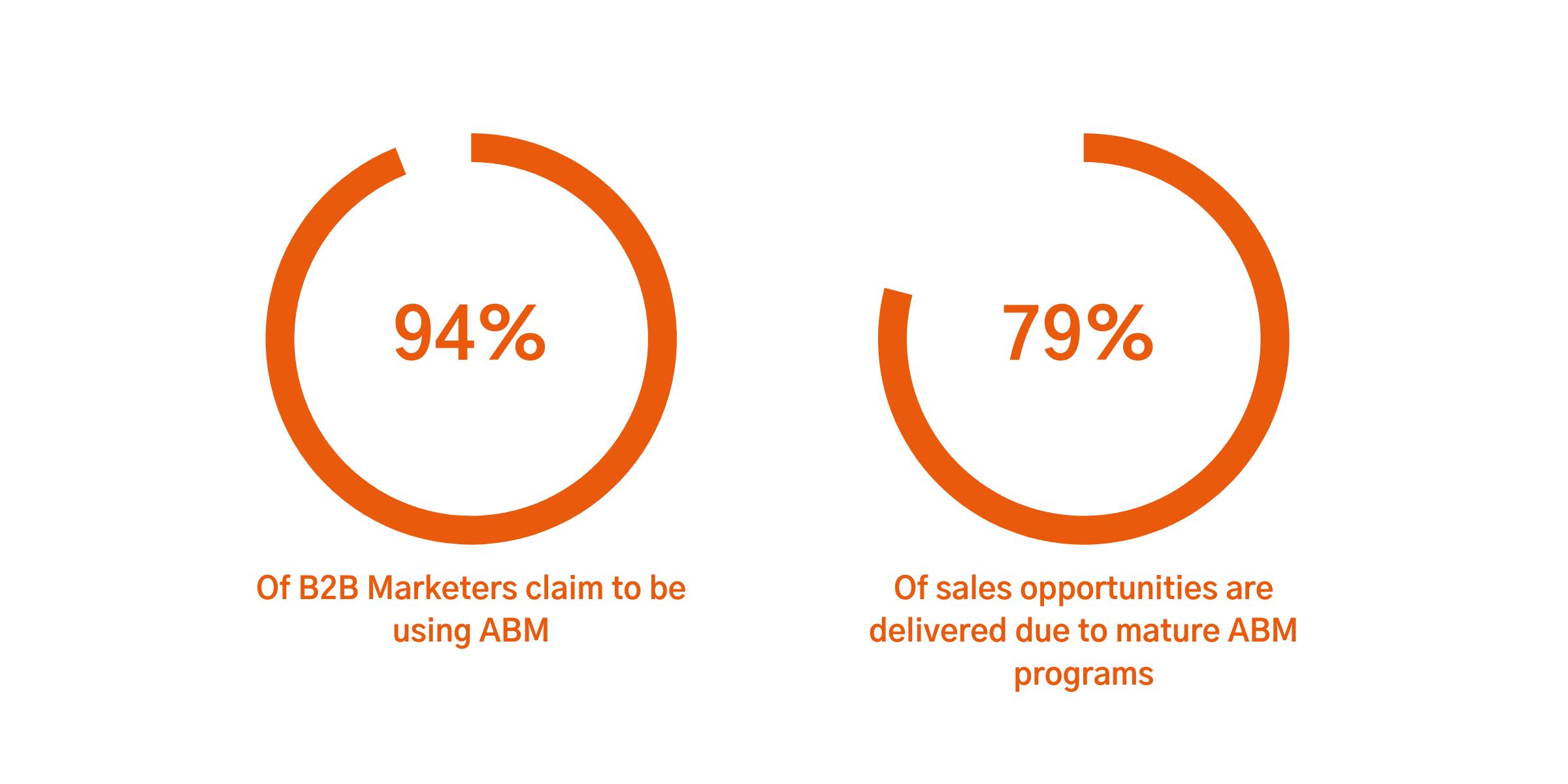The term ‘Account-based Marketing’ first appeared in 2003, in a paper written by Bev Burgess for the snappily named Information Technology Services Marketing Association – now thankfully shortened to ITSMA.
The last 20 years have seen ABM grow into something of a marketing phenomenon; so much so that 94% of B2B Marketers in a recent survey claimed to be using ABM, with mature programs delivering around 79% of sales opportunities.

Of course, there have been new marketing initiatives before. Back in 1947, Lester Wunderman came up with the term Direct Marketing. In 1987, Stan Rapp invented Maxi Marketing. Many other new approaches have been launched... and many since forgotten.
But not so in the world of B2B marketing, which ABM has shaken to its very core.
I’ve worked in B2B marketing for over 40 years.
When I started off, there was no such thing as ABM. Back then, there were trade magazines and some direct marketing using pretty poor B2B mailing lists, which were hit or miss at best.
Thankfully, things have been greatly improved by new strategies such as Account-based Marketing. This allows you to put a targeting lens on your Total Addressable Market, and focus your marketing effort and resources where it matters.
In my opinion, ABM isn’t just a new name for B2B Marketing. It’s a totally different approach and way of thinking.
The ABM methodology set down by Bev Burgess, and others, some 20 years ago has created a repeatable framework for winning, growing, and retaining your most important accounts.
This methodology, combined with advances in technology and the explosion of social media (where would we all be without LinkedIn?) has seen B2B Marketers embrace ABM like perhaps no other strategy (bar Demand Generation, dare I say?).
Pivoting to an ABM Mindset
To be successful at ABM does not just require Marketers to devise and follow the right ABM strategy, deploy the methodology, and harness technology – it also demands a different mindset towards marketing to businesses.
ABM enables Marketers to get up close and personal with their audience – much in the same way as the best salesperson would – and this is why it requires a change in approach.
From a Strategist/planner perspective, it’s not only a question of getting into the audiences’ minds, but also those of your own Sales team – to understand what they need, how they sell, and what makes them succeed (or struggle).
This requires a bigger investment in time as well as budget, so the big questions are:
- How do you ensure the leadership team understands, appreciates, and supports an ABM approach?
- What does ABM demand of us in order to deliver effectively?
- How does this change not only strategy and execution but also company mindset?
To answer these questions, we need to look at why shifting mindset can be difficult... and it all begins with you.
1. Educating yourself on ABM
ABM is a strategy. It is not a tactic. There is a difference.
To deliver the best results requires a long-term commitment, as it doesn’t only communicate to an audience – it engages with them, creating a relationship that is both personal and long-lasting.
A relationship that can be built in conjunction with your Sales and Customer Success teams.
ABM depends on data.
Anyone with a direct marketing background will be used to this, but the depth of data insights that are required was previously only available to B2C Marketers – think shopping data, mobile phone usage, or frequent traveler information.
Understanding how to use the wealth of data that we B2B Marketers can now access (and being sure to comply with data privacy legislation in all relevant markets) is something that needs to be learned and mastered.
2. Educating your team and stakeholders
ABM is a company-wide strategy. That’s part of the beauty of it.
It touches and influences not just Marketing, but Sales, Customer Success, Operations, Product, leadership and many other teams. Such an intense, long-term strategy may not be readily understood by those used to shorter, more tactical campaigns.
ABM requires greater insights, attained by looking at the company’s product or service not through the company's eyes, but through those of the audience.
3. Challenging embedded ways of thinking
With other marketing strategies – think Demand Gen or Product Marketing – the mainstay is that the results are measured soon after the campaign lands, be that clicks, inquiries or sales.
It’s a fast ROI that can be measured in a quantitative manner, which is easy to understand.
With ABM, the results play out over a longer period and, ultimately, more is delivered.
Quantitative analysis is still important, but there is a qualitative element that must be taken into consideration. The direct engagement with a key person or group, within a highly targeted company – be it an existing customer or a prospect – helps to build not only strong awareness but a lasting relationship.
The figures (i.e. revenue) may not show this in the short term, and so the embedded ways of determining success need to be reappraised.
4. Changing your own thinking/behavior
All the best things in life require dedication and commitment.
The 10,000-hour theory that has been applied to sports, music and anything you want to become good at, applies equally to ABM.
It can’t be mastered overnight; there are so many facets that it could take a lifetime to master.

It’s up to you to lead the charge on shifting attitudes towards ABM.
Although hugely successful, it’s still marginal or untested in some companies.
As with any great change in marketing, such as the introduction of Direct Marketing or Digital Marketing, there will always be those who believe the old ways are the best.
If it ain’t broke, why fix it?
Investing in new or untested areas is nearly always a risk. But, with ABM, the figures speak for themselves – so less of a risk, more of a change in knowledge and behavior.
5. Ditch vanity metrics
While I am on the subject of figures, one potentially bitter pill to swallow is the fact that vanity metrics become somewhat obsolete.
By this, I mean those quantitative figures that show interest and perhaps increased awareness – but don’t follow through to actual sales and changes in perception. It is great to demonstrate industry-beating clicks, but what’s even better is an increase in sales, retention, and loyalty.
6. Stand your ground
Leadership teams are often impatient to see results.
The temptation is therefore to provide them with ‘results’ at the expense of sticking to the plan.
Don’t be one of those who give in. Stay strong, single-minded and focused on the ultimate end goal – remember that ABM is a long-term strategy that will create benefits internally and externally.
Internally, there will be closer alignment between Marketing and Sales; and externally, greater and deeper engagement with the most profitable customers you have chosen to target – the ones you really want, which will maximize your ROI.
Patience is rewarded and your leadership team will thank you in time.








